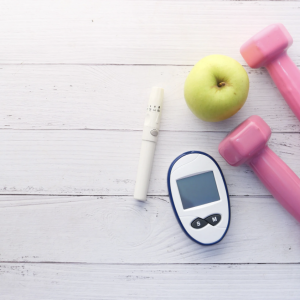Diabetes is a disease affecting 5% of Australians, and this number is growing! Diabetes involves a lot of management and care, and it is not without its complications. These complications can start to affect factors of daily life such as wound healing and balance.
Increased sugar in the blood stream can start to affect the integrity of the nerves in the body. This is called diabetic neuropathy, and it generally tends to affect the legs, and feet. Symptoms include numbness and tingling in your limbs, and perhaps also pain. Additionally, individuals with diabetic neuropathy find it can affect their proprioception and balance, as it becomes difficult to determine where objects are in space, making them a trip hazard!
Other forms of neuropathy can affect the autonomic system, which controls your organs. This can lead to issues with your bladder and bowel, eyes, and sexual activity.
Luckily, exercise can help manage sugar levels in Diabetes management! Strength training programs ensure the muscles use sugar from the blood as energy when they contract. Over time with consistent exercise, the muscles become more sensitive to insulin, meaning more blood sugar gets absorbed during periods of rest too.
So how can exercise help with diabetic neuropathy?
Progressive resistance training
Strength training focused specifically on increasing the muscle strength in the lower limbs can help reduce falls risk brought on by peripheral neuropathy. Hip flexor strengthening, such as high knee marching will help when it comes to lifting the feet to avoid obstacles! Exercises such as squats, lunges, bridges, and leg extensions, which are aimed at strengthening the thigh muscles (front and back) and the gluteal muscles (the muscles of your bottom) are excellent for powering your legs through walking and also for stability through balance.
Diabetic neuropathy can spread if the blood sugar levels are not managed properly. Strength training, as written above, can also help control blood sugar levels. This is important to stop the progression of the neuropathy from your legs into your upper limbs!
Practice balance
Using household objects as feedback for balance exercises is highly recommended to reduce falls risk from diabetic peripheral neuropathy. This will train the brain to lift the hip, knee, and toes high when walking to avoid tripping. You can try this by setting up a tissue box or books and do front and side step overs over your chosen object. Be sure to exaggerate the movement to train your brain!
Sensory and motor nerve exercises
Sensory nerves help with sensation in the feet, which is important for proprioception. Motor nerves help with controlling the muscles of the feet – as you can imagine, these are crucial for balance and walking! These nerves get affected by diabetic neuropathy, so we want to ensure we address them as part of our management plan.
Sensory training
To increase sensory awareness in the feet, you can try a release using a spiky ball or other hard rollable object such as a wine bottle or rolling pin. With firm pressure, roll the object on the underside of your bare feet. Be gentle and very cautious if you have any unhealed wounds on the feet.
Motor training
The muscles in the feet are small and very intricate, but incredibly important! As mentioned above, they are crucial for balance and walking. Toe spreading and lifting and very easy and beneficial exercises that can be done at home with no equipment. Keep your foot flat and slowly spread and lift your toes, starting at the big toe and moving in a wave-motion to your small toes. For a challenge, repeat in the other direction! Focus on control and defined movements.

